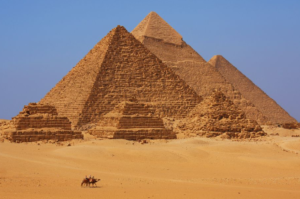In a continuation of a series of Middlesex-Egypt collaborations, London Digital Twin Research Centre (Middlesex University) has won a new Institutional Links grant under the Newton Fund Impact Scheme. The grant is led by Dr. Noha Saleeb, Associate Professor in Digital Technologies and Construction in partnership with Prof. Mohamed Marzouk, Professor of Construction Engineering and Management, Cairo University Egypt. The funding delivered by the British Council supports activities that aid in the development of Egypt’s economy using new digital twin technologies in alignment with the UN’s sustainability goals.

The project will be conducted simultaneously with the case study on Heritage assets in the UK and Egypt for mutual national benefits with the collaboration of industry and government parties namely Historic Environment Scotland, BurroHappold and Ministry of Housing Egypt.
Egypt holds a huge percentage of global heritage assets, which tourism is built around, contributing >12% to total economy and national GDP (>500 billion EGP), employing >3 million jobs. However, these assets suffer from heavy deterioration, maintenance & operations issues, which are cost & time extensive, unsustainable in energy usage & wasteful in materials & usability. Moreover, with emergence of global adversities e.g COVID19, physical decision-making & actions on crucial building aspects can be difficult. Thus, a need emerges to automate these decisions remotely & continuously allowing processes like facilities/operations management, restoration/conservation of heritage assets, to be predicted and decisions conducted more efficiently. Hence, the project aims to create a digital replica “twin” of heritage assets, embedding classification & expert systems created in a previous Institutional Links grant by the same investigators, & building on that by implementing a scheme to receive continuous stream-feed of data/information through sensors, upon which patterns could be anticipated, predicted and decisions/actions would be performed back in the asset using actuators, for its enhancement in multiple ways. The project will also develop a visual analytics framework from the information that can help manage heritage assets in active use allowing monitoring & control over vital aspects, e.g., energy, light & sound efficiency, CO2 reduction, moisture levels & material deterioration, ability to lodge artefacts, ventilation, optimal human occupancy, allowable structural & seismic forces, & optimal space-usage based on condition. These optimisations will allow impact within 10 years to increase new genres of jobs in heritage & tourism for individuals, reduce unemployment/poverty in society, generate more tourism revenues, increase national GDP, help achieve national sustainability policies/agenda & preserve global heritage sites.

